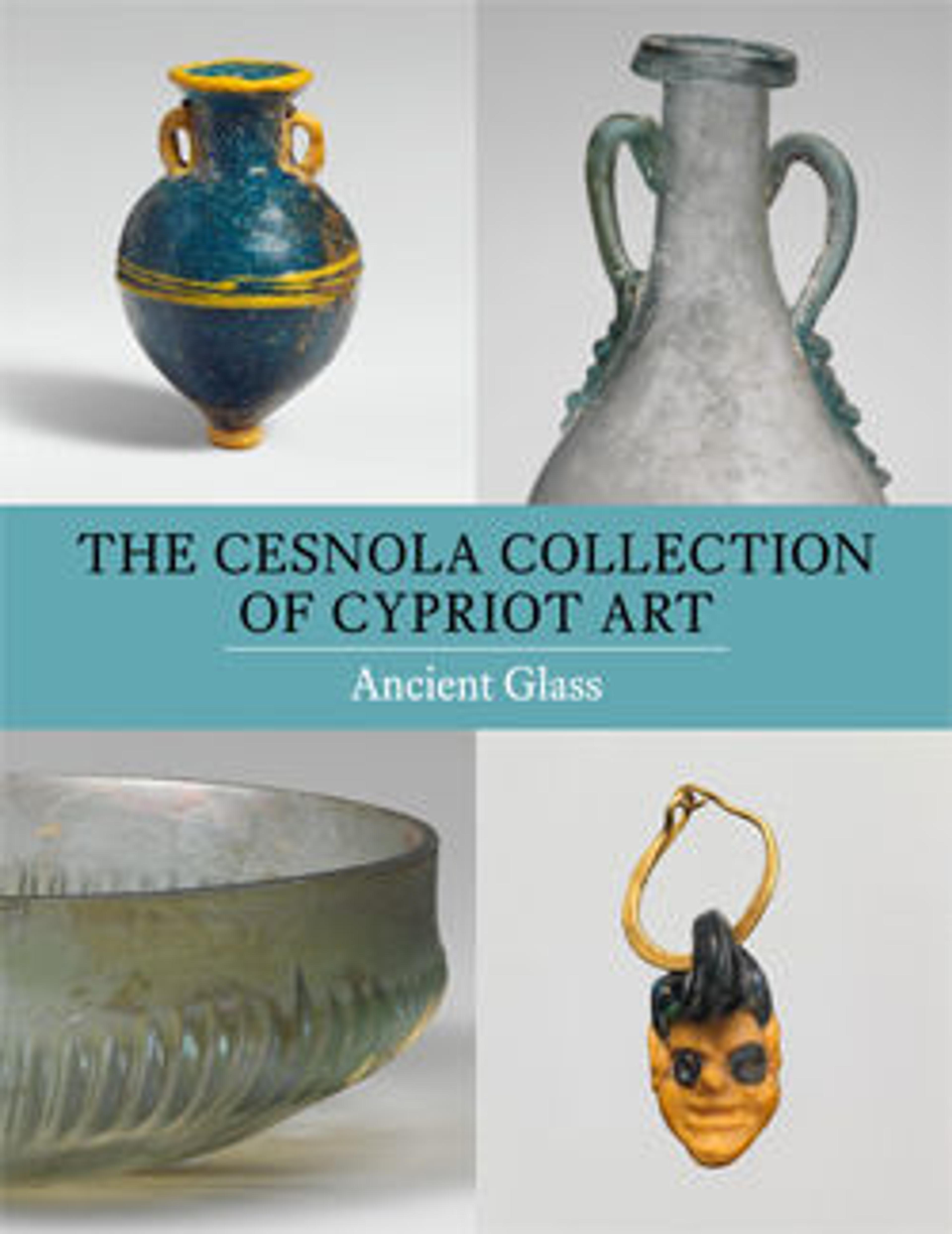Glass beaker
Colorless.
Rim short and everted, cracked off and ground; indented body with sides expanding slightly downwards and projecting rounded collar below; hexagonal sides to base with central raised circle, forming flattish but slanting bottom.
Cylindrical body has six indentations, curved at top and almost horizontal at bottom, giving body horizontal cross section that appears to be hexagonal.
Complete except for one large chip in rim and cracks in side below; pinprick and larger bubbles; dulling and faint iridescent weathering on exterior; patches of soil encrustation and weathering on interior.
Rim short and everted, cracked off and ground; indented body with sides expanding slightly downwards and projecting rounded collar below; hexagonal sides to base with central raised circle, forming flattish but slanting bottom.
Cylindrical body has six indentations, curved at top and almost horizontal at bottom, giving body horizontal cross section that appears to be hexagonal.
Complete except for one large chip in rim and cracks in side below; pinprick and larger bubbles; dulling and faint iridescent weathering on exterior; patches of soil encrustation and weathering on interior.
Artwork Details
- Title: Glass beaker
- Period: Mid Imperial
- Date: 2nd–3rd century CE
- Culture: Roman
- Medium: Glass; blown
- Dimensions: H: 2 7/8 in. (7.3 cm)
Diam.: 3 1/4 in. (8.3 cm) - Classification: Glass
- Credit Line: The Cesnola Collection, Purchased by subscription, 1874–76
- Object Number: 74.51.5819
- Curatorial Department: Greek and Roman Art
More Artwork
Research Resources
The Met provides unparalleled resources for research and welcomes an international community of students and scholars. The Met's Open Access API is where creators and researchers can connect to the The Met collection. Open Access data and public domain images are available for unrestricted commercial and noncommercial use without permission or fee.
To request images under copyright and other restrictions, please use this Image Request form.
Feedback
We continue to research and examine historical and cultural context for objects in The Met collection. If you have comments or questions about this object record, please complete and submit this form. The Museum looks forward to receiving your comments.
